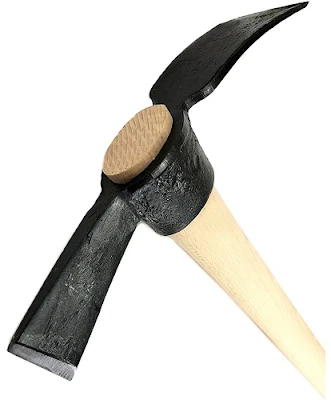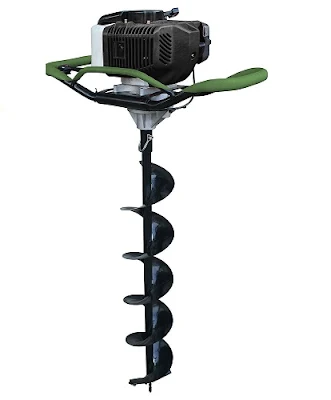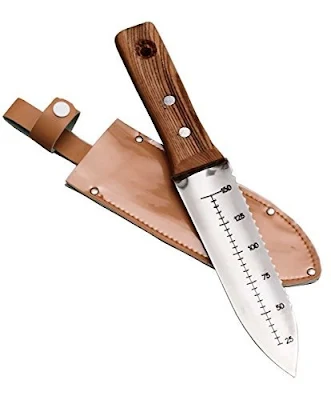Removing bamboo can be a challenging task, as the plant's roots can grow deep and wide, making it difficult to extract without damaging the surrounding environment.
In this article, we will explore some of the tools that are commonly used for digging up bamboo, including their advantages and disadvantages, and how to properly use them.
Round-point Shovel with a curved blade
The first tool that is commonly used for digging up bamboo is a shovel. Shovels come in many different shapes and sizes, but the most common type used for digging up bamboo is a round-point shovel.
This type of shovel has a curved blade that is designed to cut through soil and roots with minimal resistance. The advantages of using a shovel for digging up bamboo include its versatility and ease of use. However, shovels are not always the most efficient option, as they require a lot of manual labour and can be hard on the back.
 | |
| Round-point Shovel with a curved blade |
Flat-blade muttocks
Another popular tool for digging up bamboo is a mattock. Mattocks are similar to shovels, but have a flat blade on one side and a pointed blade on the other.
The flat blade is used for chopping and cutting through roots, while the pointed blade is used for digging and removing soil.
Mattocks are particularly useful for digging up bamboo that is growing in rocky or hard soil, as the pointed blade can be used to break up the soil and make it easier to remove.
However, mattocks can be heavy and difficult to use for extended periods of time, and can be dangerous if not used properly.
 | |
| Muttock |
Pointed-end Pickaxe
Another tool that is commonly used for digging up bamboo is a pickaxe. A pickaxe is a hand tool with a pointed end for breaking up soil and a flat end for cutting through roots.
Pickaxes are commonly used for digging up bamboo that is growing in rocky or hard soil, as they can be used to break up the soil and make it easier to remove.
However, pickaxes are heavy and difficult to use for extended periods of time, and can be dangerous if not used properly.
 |
| Pointed-end Pickaxe |
Gas-powered auger
A power tool that is commonly used for digging up bamboo is a gas-powered auger. An auger is a drilling tool with a spiral-shaped blade that is used to dig holes in the ground.
A gas-powered auger is an efficient tool for digging up bamboo, as it can quickly drill through soil and roots, making it easy to remove the bamboo plant.
However, gas-powered augers are expensive, loud, and require regular maintenance.
 | |
| Gas-powered auger |
Japanese Hori Hori knife
Finally, for more specific and delicate tasks like removing the new bamboo roots a Hori Hori knife is a great tool.
The Hori Hori knives are a type of Japanese gardening tool that has a sharp blade on one side and a serrated edge on the other. They are perfect for digging and removing bamboo roots because they can be used to cut through roots and soil with precision, while also being able to be used as a digging tool.
They are also great for removing weeds.
 | ||
|
Available on Amazon UK
Here are the simple tools that we use to use to dig up bamboo in the garden - click here to find out.
Tools for digging up bamboo
In conclusion, there are many different tools that can be used for digging up bamboo, each with their own advantages and disadvantages.
Whether you choose to use a shovel, mattock, pickaxe, gas-powered auger, or Hori Hori knife, it's important to use the tool properly and be mindful of the surrounding environment to ensure that you can harvest your bamboo without causing any damage.
Disclosure: Click on the images or the links to buy the tools. We earn an affiliate commission when you buy using our link, which comes at no additional cost to you.




